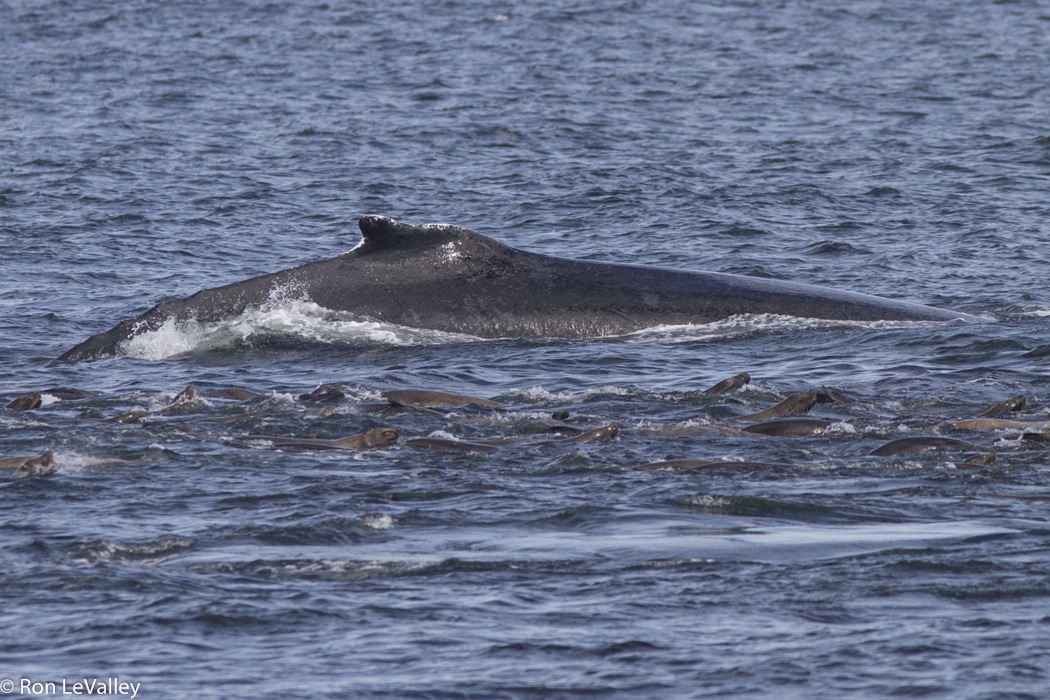These magnificent marine mammals, found in all the world’s oceans, grow to more than 100 feet long and weigh upwards of 200 tons. Their tongues alone can weigh as much as an elephant. Their hearts, as much as an automobile. Blue whales are the largest animals to have lived on earth – ever! They are 3 times larger than the largest dinosaur, and when they feed, it is the largest bio-dynamic event that occurs on the planet.

Today, the blue whale seems to be on the brink of recovery after being driven to near-extinction during the whale hunt of the early 19th century. Much of the biology and ecology of these elusive giants is not well understood due to their small numbers. Many populations remain precarious but the Mendocino coast is habitat to one of the most robust and easily studied populations of the blue whale today. The well-being of this particular group may be fundamental to the recovery of the entire species.
Even without a building, our skeleton has already been the focal point of a pilot marine sciences program for school-aged children. We have also been able to contribute to some exciting scientific research on blue whales.
- The hyoid bones were sent to Mount Sinai School of Medicine in New York where scientists are learning that this u-shaped apparatus (sitting under the larynx) is not only used for feeding as commonly thought, but also to move the whale’s head up and down, making it critically important to locomotion.
- The ear bones are being used by a neuro-anatomist at Woods Hole Oceanographic Institution to study how behavior is linked to the sensory system in various species. CT and MRI imaging technology can help us “see what the whale hears.”
- Blubber samples are being analyzed by researchers to better understand the diet of white sharks, as blue whales are one of the preferred foods of this apex predator.
- Baleen samples are undergoing stable isotope analyses to provide specific information on the blue whale’s diet.
